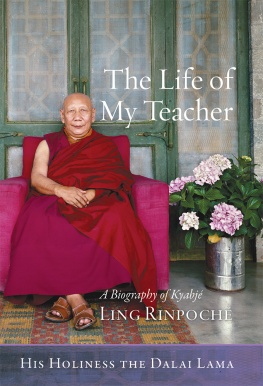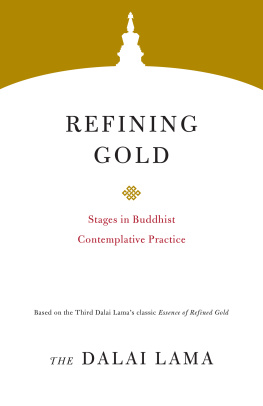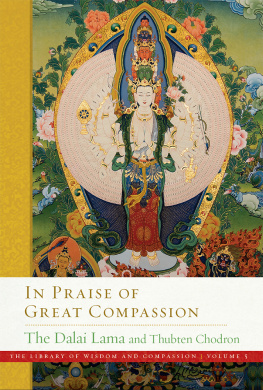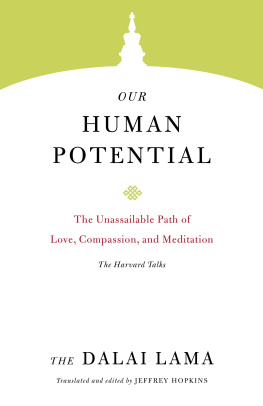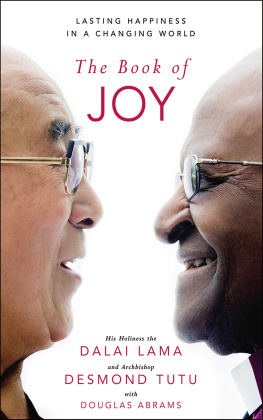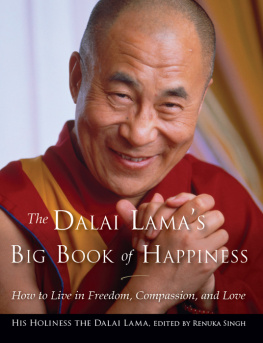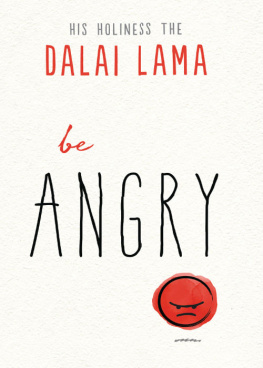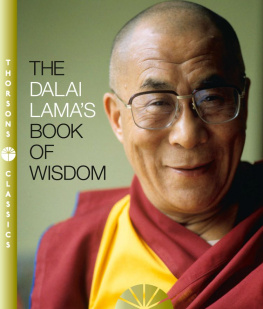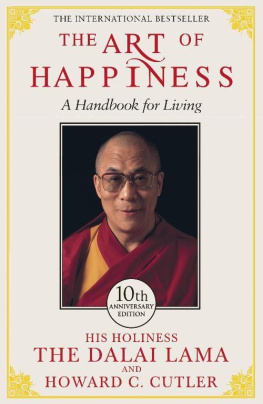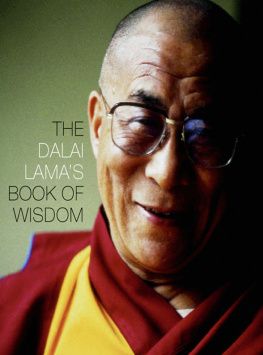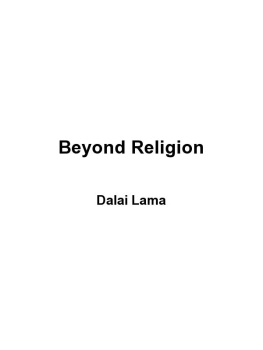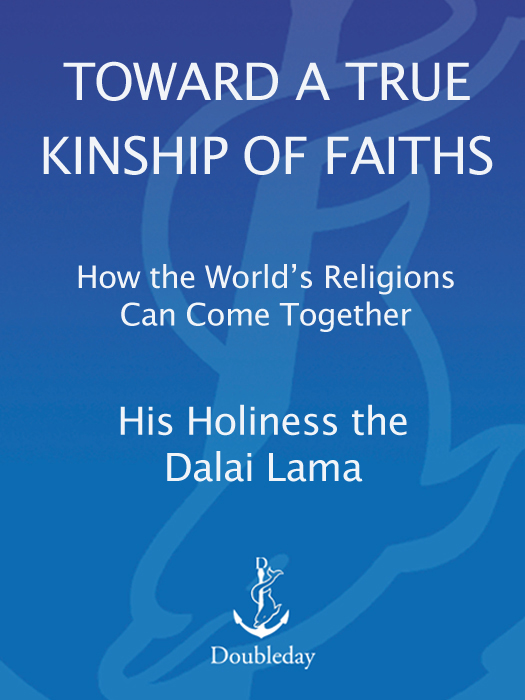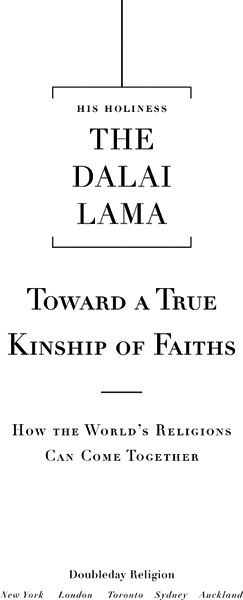Dalai Lama - Toward a True Kinship of Faiths: How the Worlds Religions Can Come Together
Here you can read online Dalai Lama - Toward a True Kinship of Faiths: How the Worlds Religions Can Come Together full text of the book (entire story) in english for free. Download pdf and epub, get meaning, cover and reviews about this ebook. year: 2010, publisher: Harmony/Rodale, genre: Religion. Description of the work, (preface) as well as reviews are available. Best literature library LitArk.com created for fans of good reading and offers a wide selection of genres:
Romance novel
Science fiction
Adventure
Detective
Science
History
Home and family
Prose
Art
Politics
Computer
Non-fiction
Religion
Business
Children
Humor
Choose a favorite category and find really read worthwhile books. Enjoy immersion in the world of imagination, feel the emotions of the characters or learn something new for yourself, make an fascinating discovery.

- Book:Toward a True Kinship of Faiths: How the Worlds Religions Can Come Together
- Author:
- Publisher:Harmony/Rodale
- Genre:
- Year:2010
- Rating:4 / 5
- Favourites:Add to favourites
- Your mark:
Toward a True Kinship of Faiths: How the Worlds Religions Can Come Together: summary, description and annotation
We offer to read an annotation, description, summary or preface (depends on what the author of the book "Toward a True Kinship of Faiths: How the Worlds Religions Can Come Together" wrote himself). If you haven't found the necessary information about the book — write in the comments, we will try to find it.
Many believe in the inevitability of an escalating clash of civilizations. Peaceful coexistence has long been problematic with religion, and while previous conflicts over religious differences may have been significant and regrettable, they did not threaten the very survival of humanity. Now, when extremists can persuade followers with the immense emotional power of faith and have access to powerful technological resources, a single spark could ignite a powder keg of frightening proportions.
Yet the Dalai Lama shows how the challenges of globalization can also move us in another direction, to a deeper plane where nations, cultures, and individuals connect through their shared human nature. All major religions confront the same perennial questions; each have distinct forms of expression. But this marvelous diversity of insight has the potential for inspiring dialogue which can enrich everyones pursuit of wisdom. All faith traditions turn to compassion as a guiding principle for living a good life. It is the task of all people with an aspiration to spiritual perfection to affirm the fundamental value of the compassion. In this way we can truly develop a deep recognition of the value of other faiths, and on that basis, we can cultivate genuine respect.
In Toward a True Kinship of Faiths, the Dalai Lama also explores where differences between religions can be genuinely appreciated without serving as a source of conflict. The establishment of genuine harmony is not dependent upon accepting that all religions are fundamentally the same or that they lead to the same place. Many fear that recognizing the value of another faith is incompatible with having devotion to the truth of ones own. Nevertheless, the Dalai Lama profoundly shows how a sincere believer can, with integrity, be a pluralist in relation to other religions without compromising commitment to the essence of the doctrinal teachings of their own faith.
An issue of central importance for the Dalai Lama personally and for the entire world in general, Toward a True Kinship of Faiths offers a hopeful yet realistic look at how humanity must step into the future.
Dalai Lama: author's other books
Who wrote Toward a True Kinship of Faiths: How the Worlds Religions Can Come Together? Find out the surname, the name of the author of the book and a list of all author's works by series.

